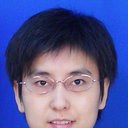Interleukin-1 mediates Alzheimer and Lewy body pathologies.
Keywords
Abstract
BACKGROUND
Clinical and neuropathological overlap between Alzheimer's (AD) and Parkinson's disease (PD) is now well recognized. Such cases of concurrent AD and Lewy body disease (AD/LBD) show neuropathological changes that include Lewy bodies (alpha-synuclein aggregates), neuritic amyloid plaques, and neurofibrillary tangles (hyperphosphorylated tau aggregates). The co-occurrence of these clinical and neuropathological changes suggests shared pathogenic mechanisms in these diseases, previously assumed to be distinct. Glial activation, with overexpression of interleukin-1 (IL-1) and other proinflammatory cytokines, has been increasingly implicated in the pathogenesis of both AD and PD.
METHODS
Rat primary cultures of microglia and cortical neurons were cultured either separately or as mixed cultures. Microglia or cocultures were treated with a secreted fragment (sAPPalpha) of the beta-amyloid precursor protein (betaAPP). Neurons were treated with IL-1beta or conditioned medium from sAPPalpha-activated microglia, with or without IL-1 receptor antagonist. Slow-release pellets containing either IL-1beta or bovine serum albumin (control) were implanted in cortex of rats, and mRNA for various neuropathological markers was analyzed by RT-PCR. Many of the same markers were assessed in tissue sections from human cases of AD/LBD.
RESULTS
Activation of microglia with sAPPalpha resulted in a dose-dependent increase in secreted IL-1beta. Cortical neurons treated with IL-1beta showed a dose-dependent increase in sAPPalpha release, an effect that was enhanced in the presence of microglia. IL-1beta also elevated the levels of alpha-synuclein, activated MAPK-p38, and phosphorylated tau; a concomitant decrease in levels of synaptophysin occurred. Delivery of IL-1beta by slow-release pellets elevated mRNAs encoding alpha-synuclein, betaAPP, tau, and MAPK-p38 compared to controls. Finally, human cases of AD/LBD showed colocalization of IL-1-expressing microglia with neurons that simultaneously overexpressed betaAPP and contained both Lewy bodies and neurofibrillary tangles.
CONCLUSIONS
Our findings suggest that IL-1 drives production of substrates necessary for formation of the major neuropathological changes characteristic of AD/LBD.


